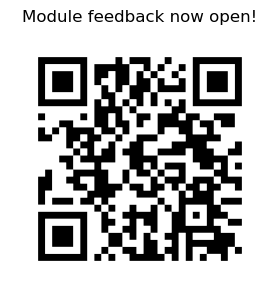Lecture 20: Overview, review and looking forward#

Coursework questions#
Please ask your questions using the Vevox Q&A. https://vevox.app/#/m/167832545

Review#
Floating point numbers#
Representations and rounding
\(eps\), machine precision
Matrices and vectors#
Multiplication
Inner product
Euclidean norms
Systems of linear equations#
Translating between matrices and systems of linear equations
Deriving simple linear systems of equations
Solving triangular systems of equations
Gaussian Elimination
LU factorisation
Jacobi iteration
Gauss Seidel iteration
Initial guesses, convergence and stopping criteria
Dynamic problems#
Derivatives, gradients/slopes and rates of change
Reading and drawing simple graphs
Deriving models for simple dynamic problems
Initial conditions
Euler’s method
Midpoint scheme
Nonlinear equations#
Roots of an equation
Bisection algorithm
Newton’s method
Quasi Newton methods
Hybrid methods
Data fitting#
How to form a system of linear equations to find a simple curve of best fit
How to find a best fit solution
When to choose which curve (from a simple choice)
Problems with our approach
What next….?#
You will apply ideas from this course in many areas of computer science including
graphics;
artificial intelligence/machine learning;
networking and parallel computation
There are plenty of opportunities for Final Year Projects on topic related to thsoe in this module
ask me, Yongxing Wang, Timon Gutleb for more ideas and information
Thank you for your attention!
Good luck with the final coursework and future studies
I hope you have a good Christmas break!

